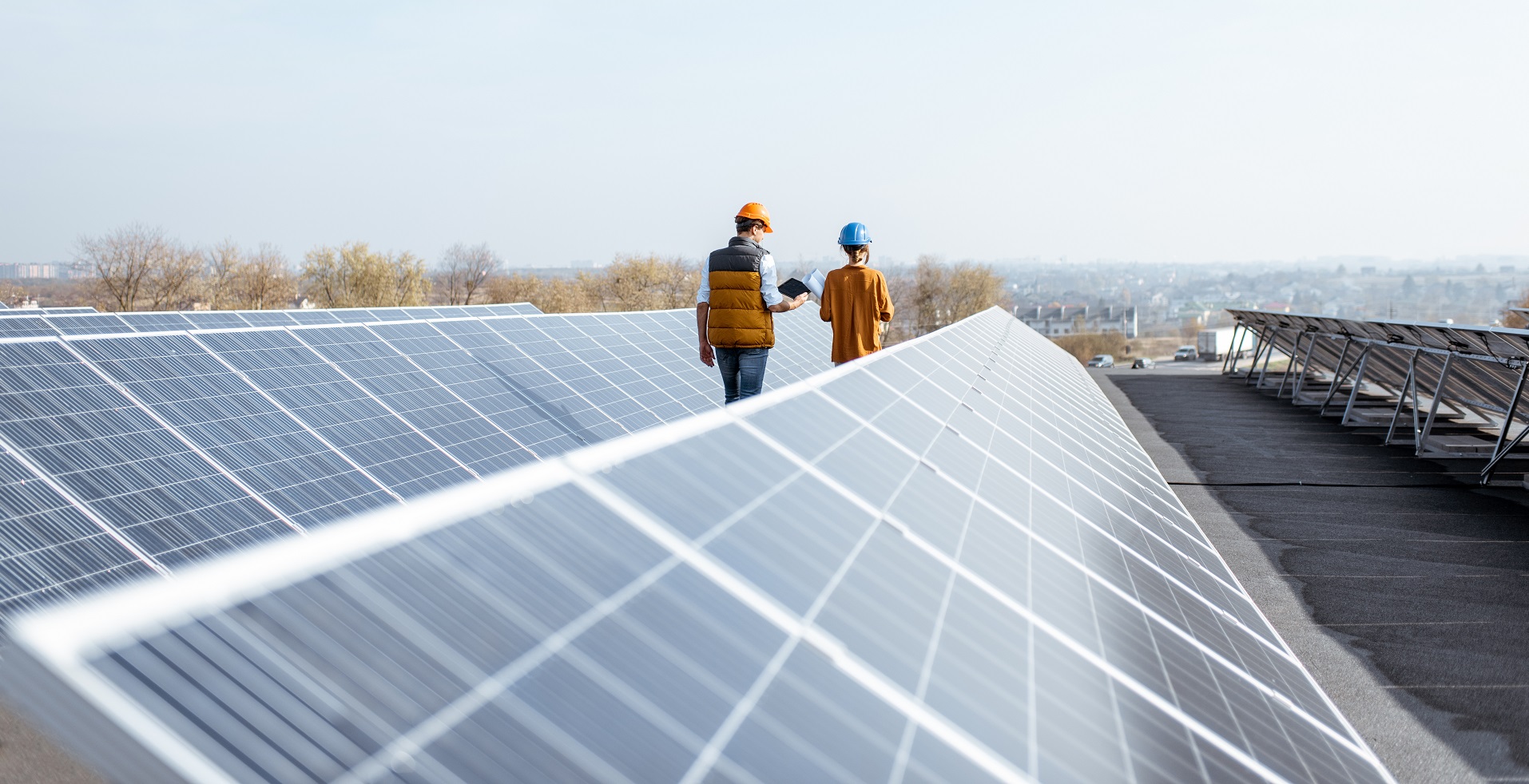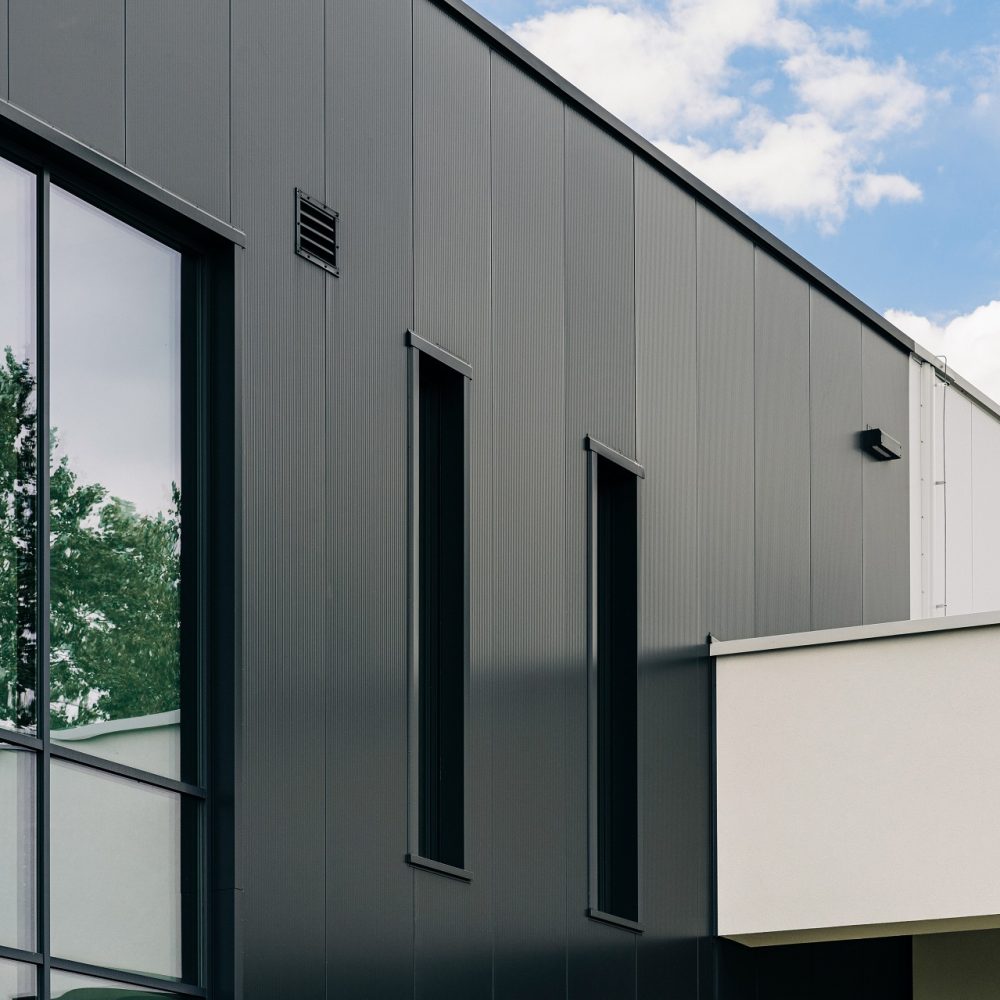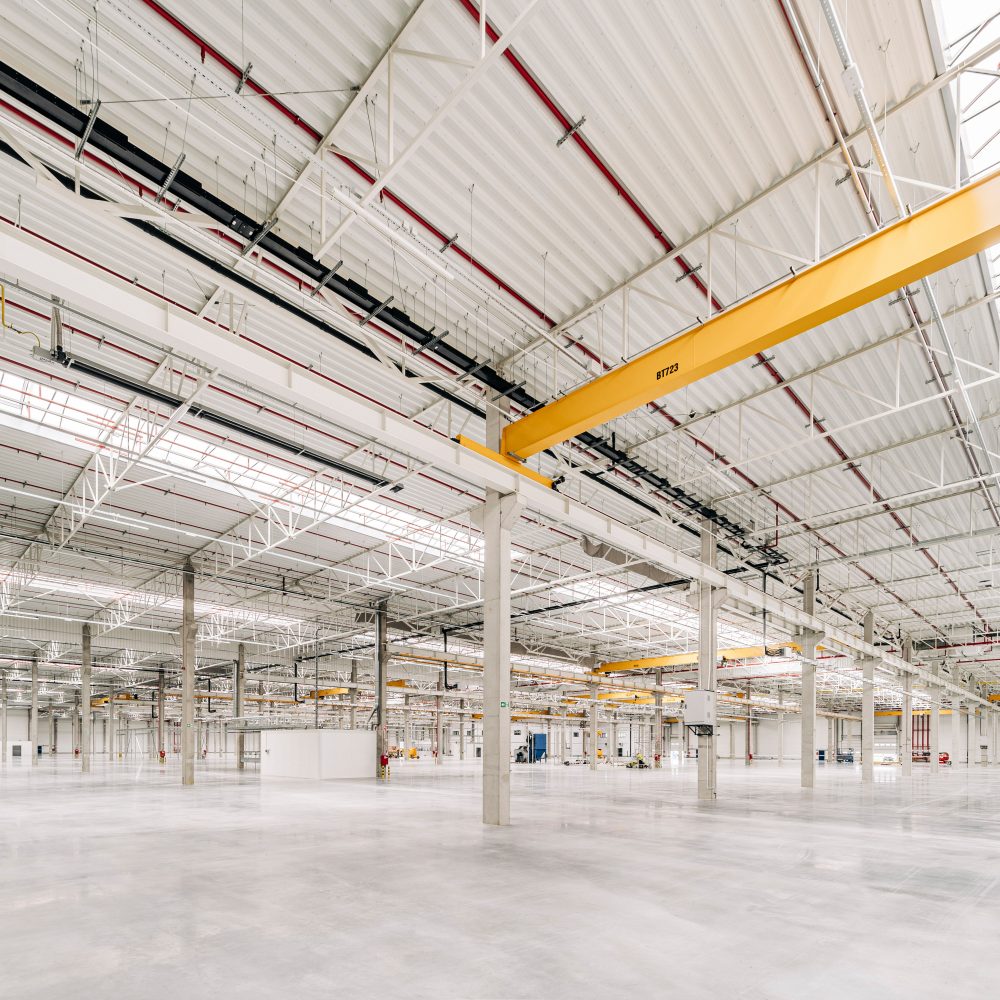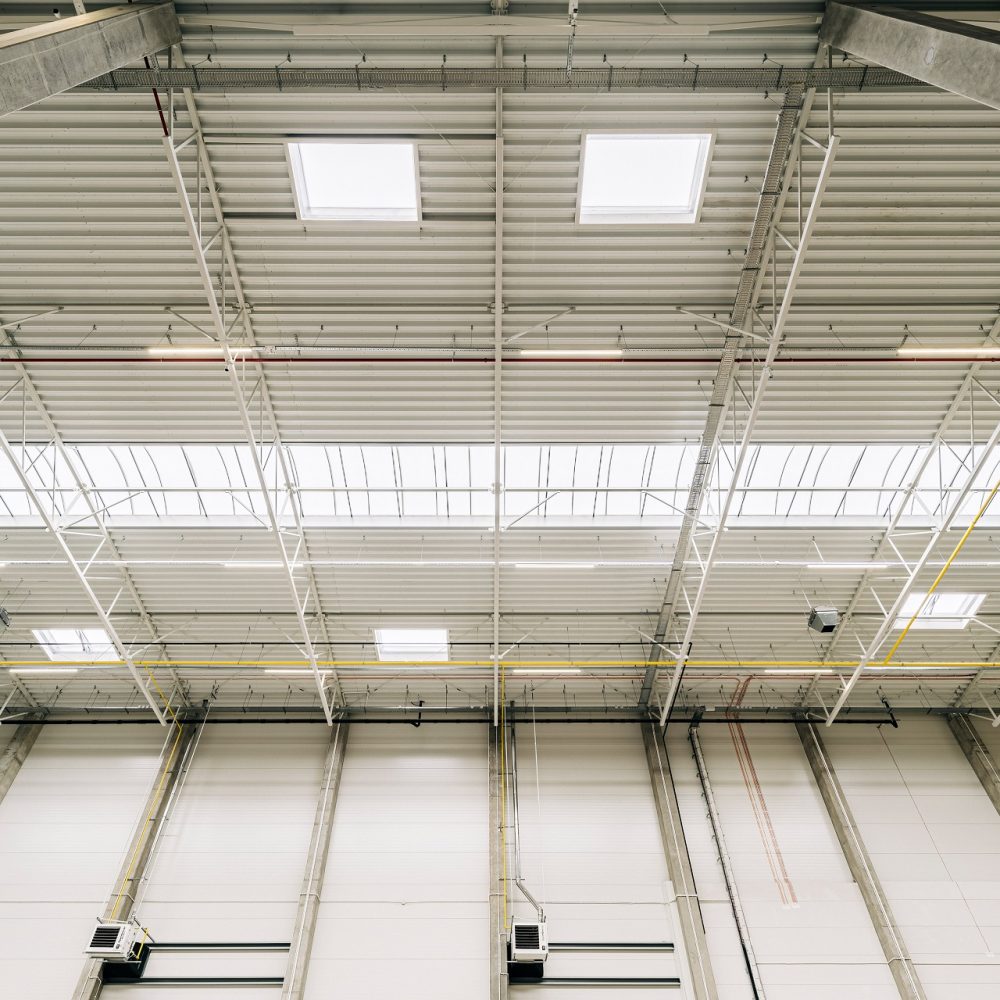
Environmentally friendly steel halls (both industrial and warehouse halls) are designed and erected in such a way that they generate as little negative impact on the environment as possible. The ECO approach in the construction industry takes into account not only the process of creating the steel hall itself, but also its operation, the possibility of future expansion or upgrade and possible disposal or recycling. In order for the steel structure to actually meet so-called “eco-building” standards, it should be analysed in the context of its entire life cycle.
The construction industry has long been under intense pressure from environmentalists, as the erection, use and demolition of industrial buildings are processes involving significant energy and water consumption and emissions of solid, liquid and gaseous pollutants. The idea of sustainable construction, which is also applicable to building modern warehouses and in line with the so-called sustainability concept, dictates that the environmental impact of a building must be taken into account. In a somewhat broader sense, steel halls under construction should also be considered not only in terms of material guidelines, economics or the impact on the environmental surroundings of a region, but also with regard to the social relations and civilisation aspects that have occurred.
Sustainable steel construction in the spirit of zero waste
Today, modern industrial halls and warehouses are built using prefabricated steel or reinforced concrete elements, which are prepared in production facilities from where they are then taken to the site for assembly. The use of prefabricated elements creates a process that is much better optimised and generates less production waste, compared to the traditional construction workflows. Moreover, note that assembly of the structure itself is much faster than classic construction and also leaves minimal waste behind. Reducing the erection time of a steel hall entails a shorter period of increased demand on natural resources such as water, for example. The environmental interference itself is also less intense.
One of the advantages of using steel in construction is that the material can be recycled many times over and the potential waste generated does not cause disposal issues. The recycling efficiency level for steel structures can in some cases be as high as 95%, which is a tangible environmental benefit. Although the production of steel takes into account the significant use of natural raw materials, the durability and reusability or recyclability of individual components makes it a project that favours a sustainable approach. To get the most out of recycling, it is worth thinking in advance about what will happen to the building when its service life is over. It is therefore possible to plan the building already at the design stage so that demolition be not a problem and the components obtained can be reused in another structure or be simply recycled. This effect can be achieved, for example, through easier access to parts that may require maintenance or replacement within a certain time frame.
Eco-friendly solutions for steel halls
Eco-friendly steel halls are built not only on the basis of an optimised prefabrication cycle and appropriate construction waste management, but also to a large extent by equipping the facilities with a range of technical solutions, such as energy-efficient air conditioning, recuperation and heating, systems to control water consumption efficient lighting. Indeed, achieving savings in the consumption of utilities throughout the building affects the environment. Moreover, improving thermal comfort while optimising energy consumption during the operation of a building can be planned right from the design stage of a steel hall by introducing innovative structural solutions such as air- or water-cooled ceilings, taking advantage of the thermal inertia of composite panels, using double-skinned roofs/façades with a ventilation gap, prefabricated wall panels with insulation and specially perforated posts to reduce the effect of thermal bridges.
Optimal energy management
However, the operating cost of an industrial hall is also largely related to the use of electricity to power the lighting, ventilation, air conditioning and storage equipment systems. In order for a building to be classified as environmentally friendly, it is also worth using modern or even innovative solutions that have a positive impact not only on the running cost of it, but also on the environment. This is where investing in solar energy from photovoltaic modules often proves profitable. It is particularly the case of large areas of almost flat industrial hall roofs that can be used to install a PV system.
Another energy-saving solution is the installation of intelligent LED zone lighting controlled by motion sensors. In this way, the unnecessary use of electricity to illuminate areas that are not currently needed is avoided. Green industrial halls are also often equipped with CO2-based cooling systems, which have the advantage of low energy consumption.
BREEAM and LEED certification
International, multi-criteria environmental rating systems have been developed to verify the extent to which buildings meet the objectives of sustainable construction. The criteria can be applied to facilities that have been on the market for many years as well as to newly built facilities, including green steel halls. The two most popular certification systems are BREEAM and LEED, based on a points-based rating scale. Due to the varying values of the criteria in the different systems, a good rating for a building in one system does not guarantee a good score in another. Admittedly, the implementation of certification criteria in the design and construction process increases the cost of the entire project, but an eco-friendly warehouse or industrial hall erected in this way will generate lower operating cost. In the long term, the entire project will therefore be more profitable, and what is more, passing the certification process increases the value and prestige of the built facility. The American LEED is a system that verifies buildings for such parameters as energy saving, rational water consumption, reduction of CO2 emissions, improvement of indoor environmental quality, etc. In turn, BREEAM, which is most popular in Poland, was the first certification system of its kind in the world. It was established in 1990 in the United Kingdom. Compared to LEED, its advantage is greater compatibility with local atmospheric and legislative conditions, as it can be adapted to a variety of geographical and legal conditions. The building, which is seeking BREEAM certification, is assessed in ten categories. These include:
- project management of the project and construction process;
- energy efficiency and the properties of the materials used in the construction and finishing of the building;
- the comfort of the building;
- the level of energy consumption in the building;
- location of the building, distance of public transport;
- the way water and sewage is managed;
- the way waste is managed;
- the way the area around the building is landscaped;
- solutions used to reduce emissions;
- project innovation.
Eco-friendly industrial and storage halls are increasingly common features of the landscape of local economic zones. Most probably, the trend towards eco-building will continue to grow, not least due to the climate policy of the European Union and the increasing awareness of investors in this field. Note, however, that although a steel structure erected in this way requires more work and spending at the beginning, such an investment pays off for investors during the life of the facility. And the environmental effect is priceless.



